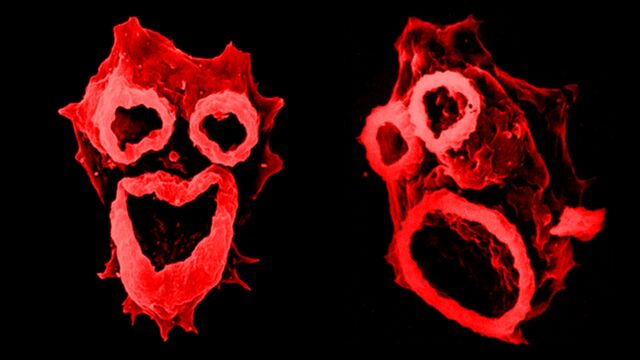Brain-Eating Amoebae Are Spreading In The United States

Following the death of a man last weekend, victim of brain-eating amoebae, Americans are worried - and rightly so: these organisms could indeed be rising in numbers according to several experts.
The death of Fabrizio Stabile, 29, made headlines Texas. Shortly after visiting a water park, the young man experienced a migraine while mowing his lawn, and quickly found himself nailed to his bed, unable to move or form coherent sentences. Although he was taken to the hospital fairly quickly, nothing could have been done in time to save him.
Discover our latest podcast
A tiny but powerful assassin
His assassin is called Naegleria fowleri. Do not be fooled by its micrometre size: though this amoeba is invisible to the naked eye, the damage it causes is astounding. Particularly resistant, this unicellular microorganism is able to attach itself to the human nasal wall before making its way up to the brain. Once comfortably installed, it engulfs red and white blood cells and destroys brain tissue.
More under this adMore under this adThis anthropophagic behaviour is at the origin of a pathological manifestation called ‘primary amoebic meningoencephalitisor' PAM. This waterborne disease (N. fowleri is found mainly in lakes, marshes, poorly maintained pools and wetlands) may be particularly difficult to identify at first glance. Its initial symptoms, often seemingly benign, can begin after an incubation period of 3 days to 3 weeks.
Headaches, moderate fever and nausea, or even irritation of the throat are the first signs of trouble. These are followed by lethargy, stiffness of the neck, photophobia and various ocular lesions, as well as involuntary convulsions. In the last stage, these symptoms are accompanied by a delirium combined with a high temperature (39 to 41 ° C), vomiting, then an irreversible coma and in 95% of PAM cases ismost often followed by the patient's death.
More under this adMore under this adMore hiding under the surface?
Although the majority of cases are reported in tropical regions, this doesn’t necessarily prevent the amoeba from thriving in more temperate climates. Although N. fowleri is often found in natural streams or open stretches, it is possible to come across it in one’s sink faucet. Therefore one is strongly discouraged from exposing the nasal cavity to non-sterilized water in any context.